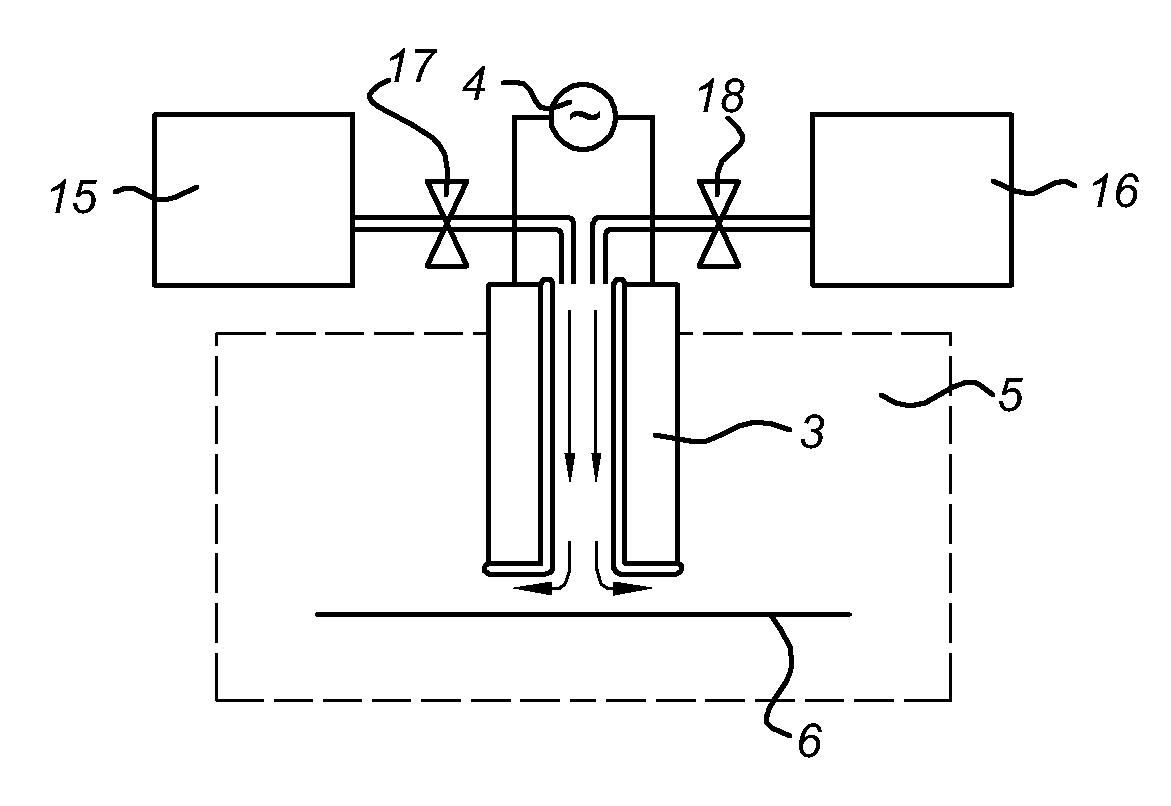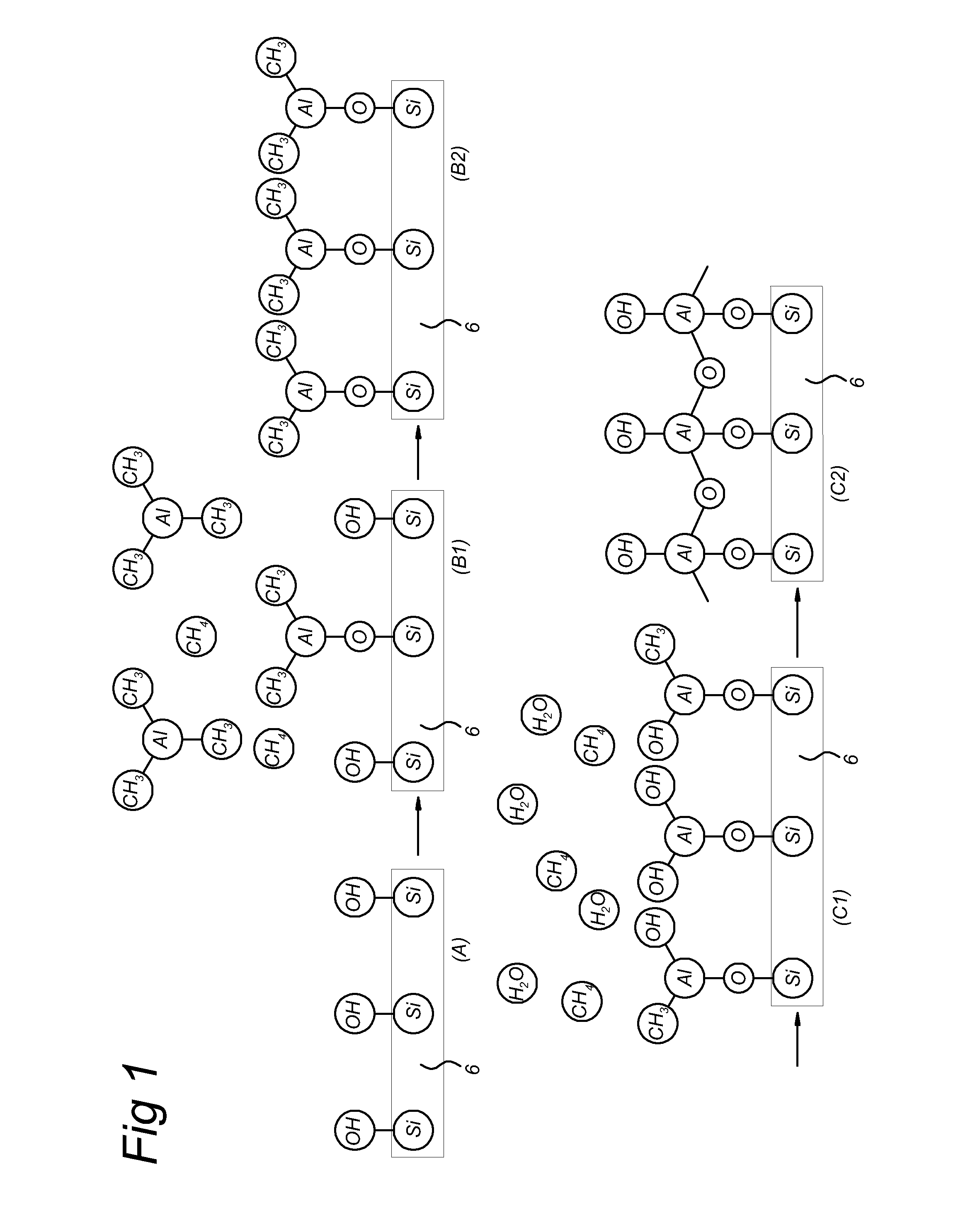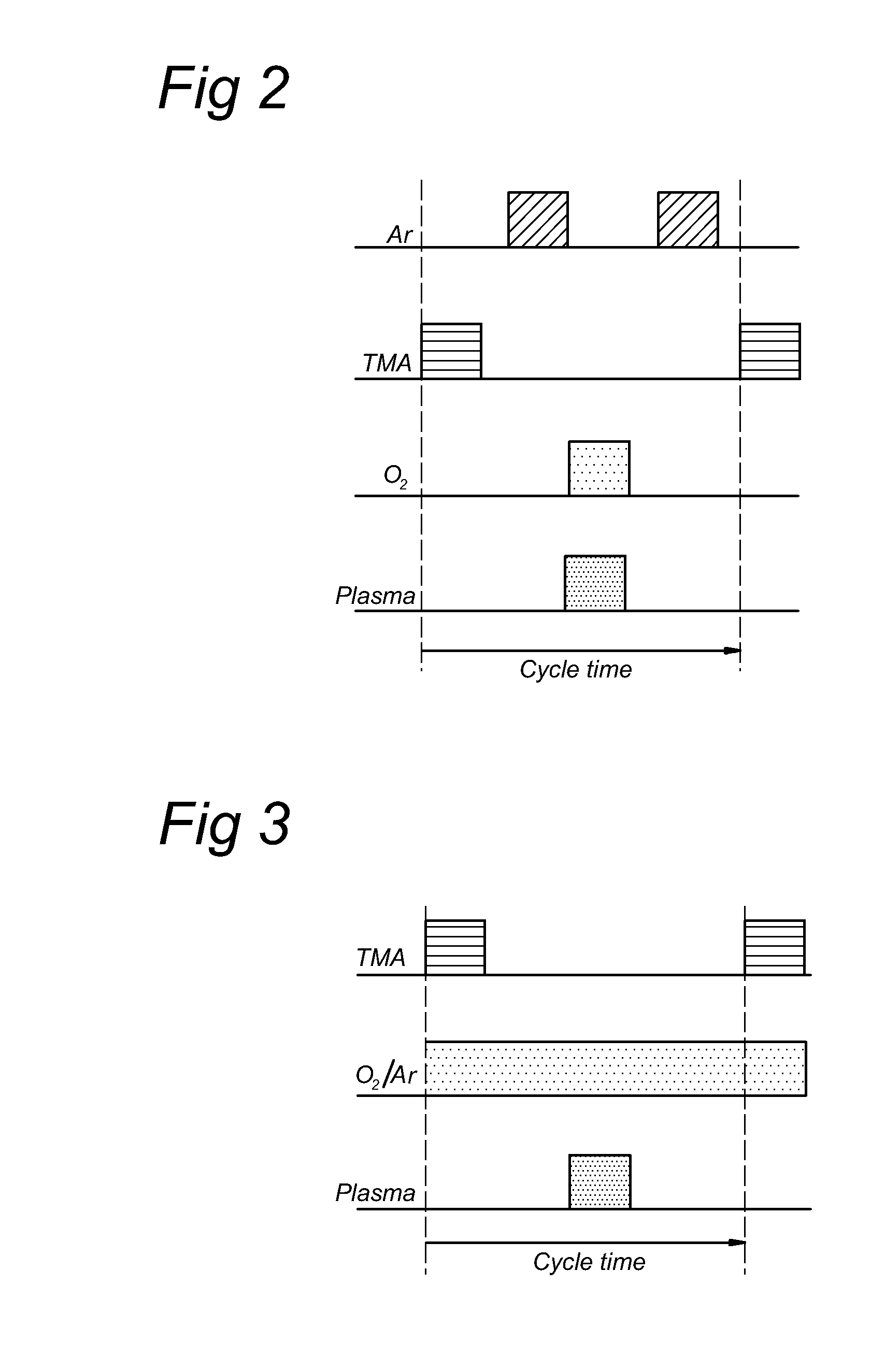Method and apparatus for atomic layer deposition using an atmospheric pressure glow discharge plasma
a glow discharge plasma and atomic layer technology, applied in the field of methods, can solve problems such as inconvenient deposition of materials on temperature sensitive substrates
- Summary
- Abstract
- Description
- Claims
- Application Information
AI Technical Summary
Benefits of technology
Problems solved by technology
Method used
Image
Examples
example 1
[0110]A sheet prepared with OLED device (substrate 6) was mounted in an experimental set-up as shown in FIG. 8. The complete set-up was placed in a glove box (type Mbraun Labmaster 130) which is purged with pure nitrogen gas. The rotation speed of the drum was set to 15 m / min and the number of rotations was set to 100 cycles.
[0111]Step A: A short “direct” plasma step (i.e. the substrate is moved through the electrodes of the plasma) is carried out to form a uniform NH2-terminated surface layer.
[0112]Step B: SiH2Cl2 precursor and nitrogen gas are supplied to the surface of the substrate 6. Due to atmospheric pressure SiH2Cl2 is reacting very quickly with the amine (NH2) groups. Typical concentration of SiH2Cl2 is 200 mg / hr. Then a purge step is performed using nitrogen.
[0113]Step C: After flushing the gap to remove the abundant precursor the ammonia is inserted as reactive agent in a concentration of 1% in inert nitrogen. Subsequently the direct atmospheric (glow) discharge plasma is...
example 2
[0116]Again a sheet is prepared comprising of OLED devices which was mounted in the experimental set-up as shown in FIG. 8. In this set-up the direct atmospheric pressure plasma unit is replaced by a remote plasma generator using an electrode arrangement of the type shown in FIG. 5a.
[0117]Step A: A short remote plasma step is carried out to form a uniform —NH2 terminated surface layer.
[0118]Step B: of the SiH2Cl2 precursor and nitrogen gas are supplied to the surface. Due to atmospheric pressure SiH2Cl2 is reacting very quickly with the amine (NH2) groups. Typical concentration of SiH2Cl2 is 200 mg / hr. Then a purge step is performed using nitrogen.
[0119]Step C: After flushing the gap to remove the abundant precursor the ammonia is inserted in a concentration of 1% in nitrogen. Subsequently the remote atmospheric discharge plasma is ignited to convert the surface substrate 6 again to an uniform NH2-terminated surface layer. This is illustrated in the table below for an example with ...
example 3
[0122]In a further embodiment the remote plasma generator using the electrode arrangement of the type shown in FIG. 5a is replaced by the type of FIG. 5b.
[0123]Step A: A short plasma step is carried out to form a uniform NH2 terminated surface layer.
[0124]Step B: of the SiH2Cl2 precursor and nitrogen gas are supplied to the surface. Due to atmospheric pressure SiH2Cl2 is reacting very quickly with the amine (NH2) groups. Typical concentration of SiH2Cl2 is 200 mg / hr.
[0125]Step C: After flushing the gap to remove the abundant precursor the ammonia is inserted in a concentration of 1% in nitrogen. Subsequently the direct (stabilized) atmospheric discharge plasma is ignited to convert the surface substrate 6 again to an uniform NH2-terminated surface layer. This is illustrated in the table below for an example with a cycle time of 2 seconds.
“Remote”Station#Gas compositiontreatment timePlasma1) Nitrogen + SiH2Cl210 slm + 200 mg / hr0.5Off2) Nitrogen10 slm0.5Off3) Nitrogen +10 slm + 0.1 s...
PUM
| Property | Measurement | Unit |
|---|---|---|
| Fraction | aaaaa | aaaaa |
| Fraction | aaaaa | aaaaa |
| Fraction | aaaaa | aaaaa |
Abstract
Description
Claims
Application Information
 Login to View More
Login to View More - R&D
- Intellectual Property
- Life Sciences
- Materials
- Tech Scout
- Unparalleled Data Quality
- Higher Quality Content
- 60% Fewer Hallucinations
Browse by: Latest US Patents, China's latest patents, Technical Efficacy Thesaurus, Application Domain, Technology Topic, Popular Technical Reports.
© 2025 PatSnap. All rights reserved.Legal|Privacy policy|Modern Slavery Act Transparency Statement|Sitemap|About US| Contact US: help@patsnap.com



